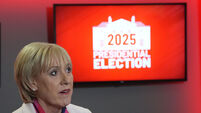Last lap for VRT challenge?
TODAY a High Court judge is scheduled to rule on whether the Revenue Commissioners mishandled the vehicle registration tax system ever since it was created 20 years ago.
An 18-year-old court case, which has been defended by the State, will also decide if drivers were effectively denied the chance to buy cheap second- hand cars available from Japan throughout this time.
The case rests on the Revenue Commissioners’ interpretation of the 1992 law that introduced VRT. The Revenue’s nuanced interpretation, and its actions around the time, made it too expensive to import fleets of nearly new cars from Japan for resale in Ireland to compete with the new car trade.
This tax approach severely curtailed a business model that had been set up by entrepreneurial importers who developed connections to over-stocked Japanese car lots.
The case hinges on an internal and, until Jun 2010, secretive valuation system the Revenue Commissioners devised to categorise secondhand cars for tax purposes. The dispute is whether its desktop assessment nobbled the importer’s right to vie equally with new car dealers.
In today’s judgment Mr Justice Roderick Murphy will also have to decide on a resulting application for over €130m worth of damages linked to a perceived lost opportunity and taxes already paid.
This was sought by an importation company which argued it was denied a fair chance to properly compete with established car dealerships.
These existing dealers had vigorously lobbied the Revenue Commissioners and the Department of Finance to influence the implementation of the VRT system. It was also these dealers’ initial value estimates that were translated and reproduced in the Revenue Commissioners’s database.
Mr Justice Murphy’s judgment will rely on a 33-day hearing last year. This capped off 18 years of litigation between the State and Used Car Importers of Ireland Ltd (UCII).
UCII is the company that said it spotted a niche in the market when Europe’s open market rules sought to bury trade barriers on Jan 1, 1993.
Its legal challenge has been one of the most complex and potentially consequential court cases to be negotiating its way through the system during the last two decades.
Papers were first filed in Mar 1995 and the court was told, by counsel for UCII, that it spent most of the intervening period trying to secure relevant documents from Revenue.
UCII’s arguments are rooted in the EU’s initial demands that Ireland open up to the free movement of goods and remove the protections that had existed for sectors like the motor trade.
On Jan 1, 1993, with the activation of the open market agreement, one of the most important changes asked of Ireland was an abolition of customs charges on the importation of cars.
This was to be replaced by a new system of VRT. It was designed to be levied on all cars when they were first registered in Ireland and, on paper at least, was to have nothing to do with imports.
In theory, the VRT system was supposed to apply to all cars equally, including thousands of prospective used imports from Japan that had been earmarked as ideal products for the Irish market.
The Japanese cars were almost new. This was because of strict rules in that country that amount to an effective and expensive NCT overhaul after two years.
Unlike many other car producing nations the vehicles were also right-hand drive and road ready for Ireland.
New Zealand, which also uses right-hand drive vehicles, witnessed a large increase in second-hand Japanese imports over the same period.
But, as the design of the VRT system was being honed, Irish dealers became agitated. They feared the system would give an advantage to second-hand car dealers at their expense.
A compromise was reached between the Society of the Irish Motor Industry, Revenue, and the Department of Finance. These concessions were built into the Finance Act of 1992.
This ultimately involved the creation of a database within the Revenue Commissioners that would suggest a value for each car on the market.
This was on the basis of value which originated with the asking prices prepared by new car dealers.
The data also set a percentage scale to rule on how much each car was to depreciate every year.
But the court has heard that the effect of this system on the existing market and the potential opportunities was enormous because it protected the new car trade’s dominant position.
UCII’s case is that the law was misguided, unfair, arbitrary, and lacked transparency.
A number of claims were put before Judge Murphy that question the constitutionality of the regime and the methods used to enforce it.
CLAIM 1:
The Revenue Commissioners either misunderstood or disregarded the Finance Act of 1992 when they established the VRT system.
The 1992 Finance Act said VRT should be charged on the price each specific car would get when it is sold for the first time in this country.
But Revenue has never based VRT on the price each car actually fetches.
Instead it developed its own matrix of tables to decide what a car was worth and how a car should depreciate. This was first drawn up by officials working to a tight deadline in 1992 with heavy reference to the niche publication, the Car Buyers Guide.
The private magazine was in turn reliant on price estimates provided by new car dealerships across the country.
The claim is that Revenue disregarded the law, which stipulated a charge on price achieved in the first sale in the country, and instead relied on a computer generated estimate.
Revenue has said its database is rooted on extensive market research and does reflect the asking prices on the market.
CLAIM 2:
The VRT system is unconstitutional because it gives car dealerships unjustified powers to influence the rate of tax paid.
The foundations of the VRT system are based on the prices for each model declared by the wholesale distributor for that make of car.
According to UCII, this gave the wholesale distributors unprecedented powers to set tax rates that would affect rival operators. And it said the chargeable rate was not the open market selling price but instead the figure set by the dealerships.
Revenue denied this and said it put its resources into developing a system that reflected the law and was based on the accurate selling price for the vast majority of vehicles on the market.
CLAIM 3:
The VRT unjustly attacks the constitutional rights of those who wanted to import second-hand cars for sale in Ireland.
UCII has told the High Court it believes it has been asked to pay an unfair share of tax on its business.
It said there was a lack a uniformity in the operation of the VRT and inequality between the proportion of charges imposed on a second-hand car imported into Ireland and a new car registered for the first time in this country.
It said the price the car gets in the market is used to calculate VAT and this should also be used to decide the VRT bill.
CLAIM 4:
Second-hand car dealers lost out because the VRT system was uncertain, disproportionate, and secretive.
UCII said it was denied the information it required to estimate its tax liability. Only one trader guide was released in 17 years.
Critically UCII said it could not access a set of tables that the Revenue used to estimate how much each make of car should depreciate every year.
Revenue said it developed this method in 1992 and was the result of a team of staff eating, drinking, and sleeping with the valuations of cars.
However, UCII said the system lacked any transparency and this was a fundamental requirement of tax law.
The company said the result has been a secretive and arbitrary system that lacked any legal certainty for those who were subject to it.
CLAIM 5:
The VRT code breaks European tax law.
It was argued the way in which the code is operated give domestic car dealers protection. This is ground in a number of arguments. But essentially the court was told that because domestic dealers have such an influence in the setting of the guide prices non-Irish dealers cannot enjoy the same influence.
Another point put forward was that potentially cheaper imported cars are penalised because the tax they are liable for will be based on higher prices charged by indigenous dealers.
The crux of the current case is the little understood method used by the Revenue Commissioners to assess makes and models of cars for VRT.
The amount of tax you pay is supposed to be a percentage of the value of the car you buy.
However, as far as the tax man is concerned, the value of that car is not altogether obvious even if you have a receipt showing exactly what you paid for it. There are some peculiarities:
*In law — The Finance Act 1992 states that VRT should be based on the price a car would reasonably be expected to fetch when it is sold for the first time in this country.
*In general — The figure used to calculate VRT has never been the asking price or the money that eventually changes hands.
*In practice — The Revenue Commissioners decide the value of each car irrespective of what the vehicle sells for.
*In effect — The figure arrived at by the Revenue Commissioners has far greater impact on secondhand imported cars.
*In theory — A secondhand car can be imported from England for €1,000 and put up for sale for €1,500. And, after some haggling, it may ultimately be sold for €1,300. At 23% VRT the tax bill should vary between €345 and €299 depending on whether you take the asking price or the selling price as your base.
*In reality — When it comes to VRT, all of these amounts are discounted and so is any invoice which may be generated during the sale.
*In terms of tax — The Revenue Commissioners estimate the price of the car according to a database first drawn up in 1992 and based off a specialist publication for the trade, the Car Buyers’ Guide. According to the tax authority this database is designed to reflect the fair price for each car being registered.
*In the end — It is this database figure, rather than the actual results of the sale, that is used to calculate the VRT. According to evidence produced in court it would not be unreasonable in the above example for the tax officials to propose a value of €2,000. This would generate a tax liability of €460.
*In the market — The car importer either has to up the asking price, to accommodate the additional tax, or take a hit.
— Conor Ryan















